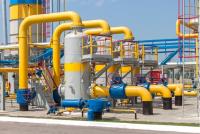 Add My Company
Add My Company
Sign In

Guide to Sealing Challenges for Pneumatic Equipment
The industrial sector covers an array of hydraulic and pneumatic equipment and devices which each present their own sealing requirements and challenges.
As industrial devices become increasingly complex for a variety of applications, it’s critical to ensure the rubber components on pneumatic equipment and machinery are specially manufactured to cater to the demanding environments.
There are a number of key considerations when selecting a sealing solution:
Mechanical performance
Low and high-temperature resistance
High-pressure capability
Firstly, what is Pneumatic Equipment?
The word Pneumatics originates from Greek and is a branch of engineering that makes use of gas or pressurised air.
Thus Pneumatic equipment and systems used in the industry are commonly powered by compressed air or compressed inert gases. The pressurised gas produces a mechanical motion. We are surrounded by examples of pneumatic systems which we use on a regular basis in our day-to-day lives.
Many of us probably don’t even realise it when we, for example, jump on a bus, head to the local gym or order a balloon for a loved one's birthday. They are all using systems that are based on pneumatics. Examples include:
Air brakes on buses or trucks
Exercise machines
Pressing keys on a keyboard
Inflatable structures like balloons, bouncy castles or blow up figurines
Pneumatic tyres on a bike, car, or another vehicle
A handheld jackhammer
There is even lego that uses pneumatics!
What are the main sealing challenges of pneumatic equipment?
O-Ring Failure
O-rings are manufactured for optimum performance to solve most sealing challenges. However, they can fail due to a number of reasons such as poor installation, poor lubrication, incorrect O-ring size, poor gland design and/or poor compatibility with the gaseous media.
Contamination
Equipment can become contaminated internally from solids such as particulates, pipe rust, sealant debris or oil from air compressor lubrication carryover. Once any type of particulate penetrates a seal, it can embed itself in seals and bearings, turning them into virtual sandpaper.
Another possible symptom is sealing component being inside the fittings. Recommended actions include protecting the fittings during storage, following proper sealing procedures and disconnecting the unit from the circuit and attempting to clear debris from the lines.
Insufficient lubrication
Failure can occur when seals have insufficient lubrication. Seals can simply run dry if heat generated by the system exceeds component temperature limits. Having the right sealing component for the application is crucial.
Operating over component limits
Operating a system overpressure or load can cause the sealing components to fail. When pneumatic equipment runs at overload capacity, the seals are subjected to higher stress and friction rates.
For more information on Guide to Sealing Challenges for Pneumatic Equipment talk to Novotema SpA
Enquire Now
List your company on FindTheNeedle.

